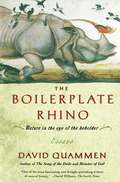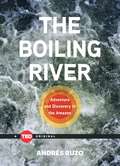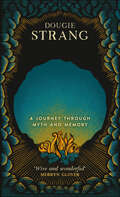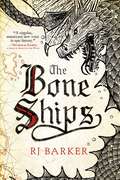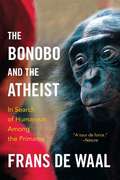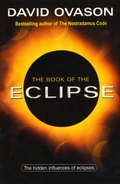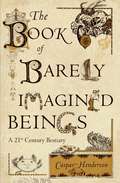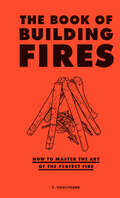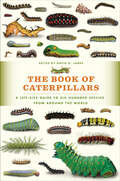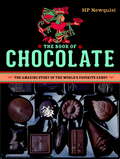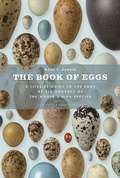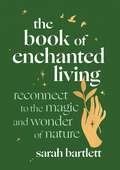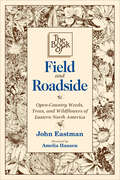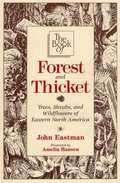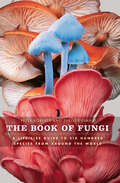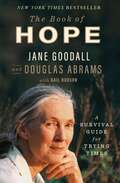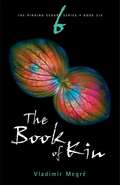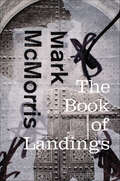- Table View
- List View
The Boilerplate Rhino: Nature in the Eye of the Beholder
by David QuammenIn 1981 David Quammen began what might be every freelance writer's dream: a monthly column for Outside magazine in which he was given free rein to write about anything that interested him in the natural world. His column was called "Natural Acts," and for the next fifteen years he delighted Outside's readers with his fascinating ruminations on the world around us. The Boilerplate Rhino brings together twenty-six of Quammen's most thoughtful and engaging essays from that column, none previously printed in any of his earlier books.In lucid, penetrating, and often quirkily idiosyncratic prose, David Quammen takes his readers with him as he explores the world. His travels lead him to rattlesnake handlers in Texas; a lizard specialist in Baja; the dinosaur museum in Jordan, Montana; and halfway across Indonesia in search of the perfect Durian fruit. He ponders the history of nutmeg in the southern Moluccas, meditates on bioluminescent beetles while soaking in the waters of the Amazon, and delivers "The Dope on Eggs" from a chicken ranch near his hometown in Montana. Quammen's travels are always jumping-off points to explore the rich and sometimes horrifying tension between humankind and the natural world, in all its complexity and ambivalence. The result is another irrepressible assortment of ideas to explore, conundrums to contemplate, and wondrous creatures to behold.
The Boiling River: Adventure and Discovery in the Amazon (TED Books)
by Andrés RuzoIn this exciting adventure mixed with amazing scientific study, a young, exuberant explorer and geoscientist journeys deep into the Amazon--where rivers boil and legends come to life.<P><P> When Andrés Ruzo was just a small boy in Peru, his grandfather told him the story of a mysterious legend: There is a river, deep in the Amazon, which boils as if a fire burns below it. Twelve years later, Ruzo--now a geoscientist--hears his aunt mention that she herself had visited this strange river. <P> Determined to discover if the boiling river is real, Ruzo sets out on a journey deep into the Amazon. What he finds astounds him: In this long, wide, and winding river, the waters run so hot that locals brew tea in them; small animals that fall in are instantly cooked. As he studies the river, Ruzo faces challenges more complex than he had ever imaged. <P> The Boiling River follows this young explorer as he navigates a tangle of competing interests--local shamans, illegal cattle farmers and loggers, and oil companies. This true account reads like a modern-day adventure, complete with extraordinary characters, captivating plot twists, and jaw-dropping details--including stunning photographs and a never-before-published account about this incredible natural wonder. Ultimately, though, The Boiling River is about a man trying to understand the moral obligation that comes with scientific discovery --to protect a sacred site from misuse, neglect, and even from his own discovery.
The Bone Cave: A Journey through Myth and Memory
by Dougie StrangThis is a book about stories – old stories of people and place, and of the more-than-human world. A vivid account of a journey through the Scottish Highlands, The Bone Cave follows a series of folktales and myths to the places in which they’re set. Travelling mostly on foot, and camping along the way amid some of Scotland’s most beautiful and rugged landscapes, Dougie Strang encounters a depth of meaning to the tales he tracks – one that offers a unique perspective on place, culture, land ownership and ecological stewardship, as well as insights into his own entanglement with place. Dougie sets out on his walk at the beginning of October, which also marks the start of the red deer rut. The bellowing of stags forms the soundtrack to his journey and is a reminder that, as well as mapping invisible landscapes of story, he is also exploring the tangible, living landscape of the present.
The Bone Ships (The Tide Child Trilogy #1)
by RJ BarkerA brilliantly imagined saga of honor, glory, and warfare, The Bone Ships is the epic launch of a new fantasy from David Gemmell Award-nominated RJ Barker.Two nations at war. One prize beyond compare. For generations, the Hundred Isles have built their ships from the bones of ancient dragons to fight an endless war. The dragons disappeared, but the battles for supremacy persisted. Now the first dragon in centuries has been spotted in far-off waters, and both sides see a chance to shift the balance of power in their favour. Because whoever catches it will win not only glory, but the war.Praise for The Bone Ships:"A vividly realized high-seas epic that pulls you deep into its world and keeps you tangled there until the very last word." --Evan Winter, author of The Rage of Dragons"The Bone Ships is excellent. Aside from the standout writing, it's one of the most interesting and original fantasy worlds I've seen in years." --Adrian Tchaikovsky, Arthur C. Clarke Award-winning authorThe Tide Child TrilogyThe Bone ShipsFor more from RJ Barker, check out:The Wounded KingdomAge of AssassinsBlood of AssassinsKing of Assassins
The Bones of the Earth
by Howard MansfieldThe Bones of The Earth is a book about landmarks, but of the oldest kind--sticks and stones. For millennia this is all there was: sticks and stones, dirt and trees, animals and people, the sky by day and night. The Lord spoke through burning bushes, through lightning and oaks. Trees and rocks and water were holy. They are commodities today and that is part of our disquiet. Howard Mansfield explores the loss of cultural memory, asking: What is the past? How do we construct that past? Is it possible to preserve the past as a vital force for the future? He writes eloquently on the land and time, on how to be a tourist of the near-at-hand, and on the forces that try to topple us. From the author of In the Memory House and The Same Ax, Twice comes The Bones of The Earth, a stunning call for reinventing our view of the future.
The Bonobo And The Atheist: In Search Of Humanism Among The Primates
by Frans De WaalFor many years, de Waal has observed chimpanzees soothe distressed neighbors and bonobos share their food. Now he delivers fascinating fresh evidence for the seeds of ethical behavior in primate societies that further cements the case for the biological origins of human fairness. Interweaving vivid tales from the animal kingdom with thoughtful philosophical analysis, de Waal seeks a bottom-up explanation of morality that emphasizes our connection with animals. In doing so, de Waal explores for the first time the implications of his work for our understanding of modern religion. Whatever the role of religious moral imperatives, he sees it as a "Johnny-come-lately" role that emerged only as an addition to our natural instincts for cooperation and empathy. But unlike the dogmatic neo-atheist of his book's title, de Waal does not scorn religion per se. Instead, he draws on the long tradition of humanism exemplified by the painter Hieronymus Bosch and asks reflective readers to consider these issues from a positive perspective: What role, if any, does religion play for a well-functioning society today? And where can believers and nonbelievers alike find the inspiration to lead a good life?Rich with cultural references and anecdotes of primate behavior, The Bonobo and the Atheist engagingly builds a unique argument grounded in evolutionary biology and moral philosophy. Ever a pioneering thinker, de Waal delivers a heartening and inclusive new perspective on human nature and our struggle to find purpose in our lives.
The Book Of The Eclipse
by David OvasonAs David Ovason shows, eclipse have always marked turning points in history and in the lives of individuals: the foundation of Rome, the crucifixion, the saving of the live of Christopher Columbus, the foundation of Washington DC, the death of Diana, Princess of Wales and even the future fall from grace of President Clinton are among Ovason's many examples. Ovason also shows how stone circles were linked to eclipses and how these events have always been supposed by initiates to create shadow-tunnels into the spiritual world, allowing special possibilities of communication with the spiritual world.
The Book of Barely Imagined Beings
by Caspar HendersonFrom medieval bestiaries to Borges s "Book of Imaginary Beings," we ve long been enchanted by extraordinary animals, be they terrifying three-headed dogs or asps impervious to a snake charmer s song. But bestiaries are more than just zany zoology they are artful attempts to convey broader beliefs about human beings and the natural order. Today, we no longer fear sea monsters or banshees. But from the infamous honey badger to the giant squid, animals continue to captivate us with the things they can do and the things they cannot, what we know about them and what we don t. With "The Book of Barely Imagined Beings," Caspar Henderson offers readers a fascinating, beautifully produced modern-day menagerie. But whereas medieval bestiaries were often based on folklore and myth, the creatures that abound in Henderson s book from the axolotl to the zebrafish are, with one exception, very much with us, albeit sometimes in depleted numbers. "The Book of Barely Imagined Beings "transports readers to a world of real creatures that seem as if they should be made up that are somehow more astonishing than anything we might have imagined. The yeti crab, for example, uses its furry claws to farm the bacteria on which it feeds. The waterbear, meanwhile, is among nature s extreme survivors, able to withstand a week unprotected in outer space. These and other strange and surprising species invite readers to reflect on what we value or fail to value and what we might change. A powerful combination of wit, cutting-edge natural history, and philosophical meditation, "The Book of Barely Imagined Beings" is an infectious and inspiring celebration of the sheer ingenuity and variety of life in a time of crisis and change. "
The Book of Barely Imagined Beings: A 21st Century Bestiary
by Caspar Henderson“Caspar Henderson takes us on an eye-opening tour of real animals that no sane human could ever have invented.” —Frans de Waal, New York Times–bestselling authorWith The Book of Barely Imagined Beings, Caspar Henderson offers readers a fascinating, beautifully produced modern-day menagerie. But whereas medieval bestiaries were often based on folklore and myth, the creatures that abound in Henderson’s book—from the axolotl to the zebrafish—are, with one exception, very much with us, albeit sometimes in depleted numbers. The Book of Barely Imagined Beings transports readers to a world of real creatures that seem as if they should be made up—that are somehow more astonishing than anything we might have imagined. The yeti crab, for example, uses its furry claws to farm the bacteria on which it feeds. The waterbear, meanwhile, is among nature’s “extreme survivors,” able to withstand a week unprotected in outer space. These and other strange and surprising species invite readers to reflect on what we value—or fail to value—and what we might change.A powerful combination of wit, cutting-edge natural history, and philosophical meditation, The Book of Barely Imagined Beings is an infectious and inspiring celebration of the sheer ingenuity and variety of life in a time of crisis and change.“The Book of Barely Imagined Beings is one that Pliny would have envied, Darwin applauded, and Borges relished . . . In these days of doom and gloom, I can think of nothing more rejoicing than Caspar Henderson’s magical book.” —Alberto Manguel, author of A History of Reading“Magnificent, bravura, beautiful and astoundingly interesting.” —The Sunday Times“Spell-binding, brilliantly executed, extraordinary.” —The Guardian
The Book of Beetles: A Life-Size Guide to Six Hundred of Nature's Gems
by Patrice Bouchard“Profiles 600 of the most stunning, most wonderfully adapted beetles around . . . The result is a work that is nothing short of magnificent.” —WiredWhen renowned British geneticist J. B. S. Haldane was asked what could be inferred about God from a study of his works, Haldane replied, “An inordinate fondness for beetles.” With 350,000 known species, and scientific estimates that millions more have yet to be identified, their abundance is indisputable as is their variety. They range from the delightful summer firefly to the one-hundred-gram Goliath beetle. Beetles offer a dazzling array of shapes, sizes, and colors that entice scientists and collectors across the globe.The Book of Beetles celebrates the beauty and diversity of this marvelous insect. Six hundred significant beetle species are covered, with each entry featuring a distribution map, basic biology, conservation status, and information on cultural and economic significance. Full-color photos show the beetles both at their actual size and enlarged to show details, such as the sextet of spots that distinguish the six-spotted tiger beetle or the jagged ridges of the giant-jawed sawyer beetle. Based in the most up-to-date science and accessibly written, the descriptive text will appeal to researchers and armchair coleopterists alike.The humble beetle continues to grow in popularity, taking center stage in biodiversity studies, sustainable agriculture programs, and even the dining rooms of adventurous and eco-conscious chefs. The Book of Beetles is certain to become the authoritative reference on these remarkably adaptable and beautiful creatures.“Photographs of more than 600 colorful, glossy species, resembling bejeweled broaches morethan creepy crawlies, are presented at actual size.” —Publishers Weekly
The Book of Building Fires: How to Master the Art of the Perfect Fire
by S. CoulthardLearn to construct the best fire, whether it’s in a fireplace, a woodstove, or a campsite in the great outdoors.Straightforward instruction and helpful how-to illustrations provide the wisdom and tools for building a roaring fire with confidence, skill, and efficiency—a fire that people will gather around in admiration. Filled with more than sixty entries on every aspect of fire craft, including sourcing proper wood, chopping and storing, crafting homemade fire starters, building and lighting the perfect stack, and cooking over an open flame, this book also contains a handy chart with information on more than twenty-five species of trees and their wood-burning properties. A must-have for anyone who enjoys the simple satisfaction of gathering around a warm, crackling fire, here is an invitation to celebrate the gifts of slow living and one of life’s most enduring pleasures.
The Book of Caterpillars: A Life-Size Guide to Six Hundred Species from Around the World
by David G. James“For the lover of all things lepidopterous, The Book of Caterpillars is a beautifully curated collection and guide to 600 species from around the globe.” —The American Biology TeacherWhile most of us picture caterpillars as cute fuzzballs munching on leaves, there is much more to them than we imagine. A caterpillar’s survival hinges on finding enough food and defending itself from the array of natural enemies lined up to pounce and consume. And the astounding adaptations and strategies they have developed to maximize their chances of becoming a butterfly or moth are only just beginning to be understood, from the Spicebush Swallowtail caterpillar that resembles a small snake to the Eastern Carpenter Bee Hawkmoth caterpillar that attempts to dissuade potential predators by looking like a diseased leaf.The Book of Caterpillars unveils the mysteries of six hundred species from around the world, introducing readers to the complexity and beauty of these underappreciated insects. With the advent of high-quality digital macrophotography, the world of caterpillars is finally opening up. The book presents a wealth of stunning imagery that showcases the astonishing diversity of caterpillar design, structure, coloration, and patterning. Each entry also features a two-tone engraving of the adult specimen, emphasizing the wing patterns and shades, as well as a population distribution map and table of essential information that includes their habitat, typical host plants, and conservation status. Throughout the book are fascinating facts that will enthrall expert entomologists and curious collectors alike.A visually rich and scientifically accurate guide to six hundred of the world’s most peculiar caterpillars, this volume presents readers with a rare, detailed look at these intriguing forms of insect life.
The Book of Chocolate: The Amazing Story of the World's Favorite Candy
by Hp NewquistChocolate . . . - Its scientific name means “food of the gods.”- The Aztecs mixed it with blood and gave it to sacrificial victims to drink.- The entire town of Hershey, Pennsylvania was built by Milton Hershey to support his chocolate factory. Its streetlights are shaped like chocolate Kisses.- The first men to climb to the top of Mount Everest buried a chocolate bar there as an offering to the gods of the mountain.- Every twenty-four hours, the U.S. chocolate industry goes through eight million pounds of sugar.- Its special flavor is created by a combination of 600 to 1000 different chemical compounds Join science author HP Newquist as he explores chocolate’s fascinating history. Along the way you’ll meet colorful characters like the feathered-serpent god Quetzalcoatl, who gave chocolate trees to the Aztecs; Henri Nestlé, who invented milk chocolate while trying to save the lives of babies who couldn’t nurse; and the quarrelsome Mars family, who split into two warring factions, one selling Milky Way, Snickers, and 3 Musketeers bars, the other Mars Bars and M&M’s. From its origin as the sacred, bitter drink of South American rulers to the familiar candy bars sold by today’s multimillion dollar businesses, people everywhere have fallen in love with chocolate, the world’s favorite flavor.
The Book of Eggs: A Life-Size Guide to the Eggs of Six Hundred of the World's Bird Species
by Mark E. HauberFrom the brilliantly green and glossy eggs of the Elegant Crested Tinamou—said to be among the most beautiful in the world—to the small brown eggs of the house sparrow that makes its nest in a lamppost and the uniformly brown or white chickens’ eggs found by the dozen in any corner grocery, birds’ eggs have inspired countless biologists, ecologists, and ornithologists, as well as artists, from John James Audubon to the contemporary photographer Rosamond Purcell. For scientists, these vibrant vessels are the source of an array of interesting topics, from the factors responsible for egg coloration to the curious practice of “brood parasitism,” in which the eggs of cuckoos mimic those of other bird species in order to be cunningly concealed among the clutches of unsuspecting foster parents.The Book of Eggs introduces readers to eggs from six hundred species—some endangered or extinct—from around the world and housed mostly at Chicago’s Field Museum of Natural History. Organized by habitat and taxonomy, the entries include newly commissioned photographs that reproduce each egg in full color and at actual size, as well as distribution maps and drawings and descriptions of the birds and their nests where the eggs are kept warm. Birds’ eggs are some of the most colorful and variable natural products in the wild, and each entry is also accompanied by a brief description that includes evolutionary explanations for the wide variety of colors and patterns, from camouflage designed to protect against predation, to thermoregulatory adaptations, to adjustments for the circumstances of a particular habitat or season. Throughout the book are fascinating facts to pique the curiosity of binocular-toting birdwatchers and budding amateurs alike. Female mallards, for instance, invest more energy to produce larger eggs when faced with the genetic windfall of an attractive mate. Some seabirds, like the cliff-dwelling guillemot, have adapted to produce long, pointed eggs, whose uneven weight distribution prevents them from rolling off rocky ledges into the sea. A visually stunning and scientifically engaging guide to six hundred of the most intriguing eggs, from the pea-sized progeny of the smallest of hummingbirds to the eggs of the largest living bird, the ostrich, which can weigh up to five pounds, The Book of Eggs offers readers a rare, up-close look at these remarkable forms of animal life.
The Book of Enchanted Living: Reconnect to the magic and wonder of nature
by Sarah BartlettIt's time to let go of disenchanted thinking and embrace enchanted living. . .In a world full of demands and obligations, it is easy to get stuck in the same tiring routines - but what if instead we chose to embrace a life full of joy and enchantment? Nature offers the perfect antidote for weary souls. Carving out time to truly experience and engage with the wonder and beauty of the world around us can help ease our minds, soothe our spirits, and leave us feeling euphoric.This enchanting little book offers rituals, intentions and affirmations that will allow you to commune with nature so that you can belong to both its wildness and its tenderness. By aligning with the rhythms of the natural world, you will learn to reconnect to the enchantment deep within you to live an authentic life filled with meaning and possibility.
The Book of Enchanted Living: Reconnect to the magic and wonder of nature
by Sarah BartlettIt's time to let go of disenchanted thinking and embrace enchanted living. . .In a world full of demands and obligations, it is easy to get stuck in the same tiring routines - but what if instead we chose to embrace a life full of joy and enchantment? Nature offers the perfect antidote for weary souls. Carving out time to truly experience and engage with the wonder and beauty of the world around us can help ease our minds, soothe our spirits, and leave us feeling euphoric.This enchanting little book offers rituals, intentions and affirmations that will allow you to commune with nature so that you can belong to both its wildness and its tenderness. By aligning with the rhythms of the natural world, you will learn to reconnect to the enchantment deep within you to live an authentic life filled with meaning and possibility.
The Book of Field and Roadside: Open-Country Weeds, Trees, and Wildflowers of Eastern North America
by John EastmanThe acclaimed nature writer continues his series exploring the fact and folklore of American plant life with this beautifully illustrated volume. In The Book of Field and Roadside, John Eastman explores the botanical life of open dryland habitats. Picking up where typical field guides leave off, this handy reference takes an ecological approach, providing complete descriptions of eighty-five plants (from Ailanthus to Yucca) found in fields, open meadows, and along roadsides, as well as wildlife communities associated with them. Written in an engaging manner, this book helps readers identify dryland plants, discusses what other organisms, plant and animal, might be found in the same area, and explains why. The informative text is enhanced by beautifully detailed illustrations by nature artist Amelia Hansen.
The Book of Forest and Thicket: Trees, Shrubs, and Wildflowers of Eastern North America
by John EastmanFact and folklore that explore the details of common plant and animal communities east of the rockies.
The Book of Fungi: A Life-Size Guide to Six Hundred Species from around the World
by Shelley Evans Peter Roberts&“The lurid photographs and enticing, offhandedly witty descriptions make the reader want to go out collecting specimens right away."—Popular Science From morels to chanterelles, toadstools to truffles, fungi have been a source of fascination since the earliest hunter-gatherers first foraged for them. Today there are few, if any, places on Earth where fungi have not found themselves a home—their habitats span the poles and the tropics, mountaintops and backyards. Packed with facts and photos, this book introduces you to fungus in many forms—some parasitic, some poisonous, some hallucinogenic and some with healing properties that can be tapped for pharmaceutical products. Then of course, there are the delicious mushrooms that are prized by epicureans and gourmands worldwide. Each species here is reproduced at its actual size, in full color, and accompanied by a scientific explanation of its distribution, habitat, association, abundance, growth form, spore color, and edibility. With information on the characteristics, locations, distinguishing features, and occasionally bizarre habits of these fungi, you&’ll find in this book the common and the conspicuous, the unfamiliar and the odd—including a fungal predator, for instance, that hunts its prey with lassos, and several that set traps, including one that entices sows by releasing the pheromones of a wild boar. &“How dazzling is the world of mushrooms? The fan-shaped cinnabar oysterling looks like something you would find undersea. The violet webcap is vibrant. These are among the more than 600 fungi described and illustrated in this scholarly and beautiful book.&”—TheNew York Times &“Anyone with an appreciation of the beauty of nature will enjoy.&”—Grand Forks Herald
The Book of Hope: A Survival Guide for Trying Times (Global Icons Series)
by Jane Goodall Douglas AbramsIn a world that seems so troubled, how do we hold on to hope? <p><p> Looking at the headlines—the worsening climate crisis, a global pandemic, loss of biodiversity, political upheaval—it can be hard to feel optimistic. And yet hope has never been more desperately needed. <p><p> In this urgent book, Jane Goodall, the world's most famous living naturalist, and Douglas Abrams, the internationally bestselling co-author of The Book of Joy, explore through intimate and thought-provoking dialogue one of the most sought after and least understood elements of human nature: hope. <p><p> In The Book of Hope, Jane focuses on her "Four Reasons for Hope": The Amazing Human Intellect, The Resilience of Nature, The Power of Young People, and The Indomitable Human Spirit. <p><p> Drawing on decades of work that has helped expand our understanding of what it means to be human and what we all need to do to help build a better world.
The Book of Kin (The Ringing Cedars Series #6)
by Vladimir Megré John Woodsworth Leonid SharashkinAnastasia has shown that there exists in Nature some kind of mechanism, some kind of higher power capable of solving a seemingly insoluble problem in an instant. Through a couple's -- a man and a woman's -- specific mental state, this mechanism or power will help them find the conditions and techniques of sexual intercourse appropriate solely to them.
The Book of Landings (Wesleyan Poetry Series)
by Mark McMorrisThe Book of Landings brings together the second and third parts of Mark McMorris's visionary trilogy "Auditions for Utopia,"—initiated in Entrepôt—and marks two stages in the evolution of the poet's conception of space. The first stage of the collection is the entrepôt, a space where disparate vectors of identity congregate, come into conflict, and finally merge into hybrid forms. The poetry follows a trajectory of diaspora, or exile, instigated by conquest, colonialism, wars, and political defeat in the search for Utopia. In The Book of Landings the promised dwelling has been removed from the realm of physical geography, and there is only transition—fragmentary episodes of arrival and departure, in transit from one entrepôt to another. These episodes of transit do not only compose a linear sequence only. Instead, they define a space or surface marked by repeated traversals over time—tracings and, importantly, re-tracings, by explorers, conquerors, migrants, merchants, slaves, refugees, and exiles—a city of palimpsests. An online reader's companion will be available at markmcmorris.site.wesleyan.edu.
The Book of Leaves
by Allen J. Coombes Zsolt DebreczyOf all our childhood memories, few are quite as thrilling, or as tactile, as those of climbing trees. Scampering up the rough trunk, spying on the world from the cool green shelter of the canopy, lying on a limb and looking up through the leaves at the summer sun almost made it seem as if we were made for trees, and trees for us. Even in adulthood, trees retain their power, from the refreshing way their waves of green break the monotony of a cityscape to the way their autumn transformations take our breath away. In this lavishly illustrated volume, the trees that have enriched our lives finally get their full due, through a focus on the humble leaves that serve, in a sense, as their public face. The Book of Leaves offers a visually stunning and scientifically engaging guide to six hundred of the most impressive and beautiful leaves from around the world. Each leaf is reproduced here at its actual size, in full color, and is accompanied by an explanation of the range, distribution, abundance, and habitat of the tree on which it’s found. Brief scientific and historical accounts of each tree and related species include fun-filled facts and anecdotes that broaden its portrait. The Henry’s Maple, for instance, found in China and named for an Irish doctor who collected leaves there, bears little initial resemblance to the statuesque maples of North America, from its diminutive stature to its unusual trifoliolate leaves. Or the Mediterranean Olive, which has been known to live for more than 1,500 years and whose short, narrow leaves only fall after two or three years, pushed out in stages by the emergence of younger leaves. From the familiar friends of our backyards to the giants of deep woods, The Book of Leaves brings the forest to life—and to our living rooms—as never before.
The Book of Leaves: Leaf-by-Leaf Guide to Six Hundred of the World's Great Trees
by Allen J. CoombesOf all our childhood memories, few are quite as thrilling, or as tactile, as those of climbing trees. Scampering up the rough trunk, spying on the world from the cool green shelter of the canopy, lying on a limb and looking up through the leaves at the summer sun almost made it seem as if we were made for trees, and trees for us.Even in adulthood, trees retain their power, from the refreshing way their waves of green break the monotony of a cityscape to the way their autumn transformations take our breath away. In this lavishly illustrated volume, the trees that have enriched our lives finally get their full due, through a focus on the humble leaves that serve, in a sense, as their public face. The Book of Leaves offers a visually stunning and scientifically engaging guide to six hundred of the most impressive and beautiful leaves from around the world. Each leaf is reproduced here at its actual size, in full color, and is accompanied by an explanation of the range, distribution, abundance, and habitat of the tree on which it’s found. Brief scientific and historical accounts of each tree and related species include fun-filled facts and anecdotes that broaden its portrait. The Henry’s Maple, for instance, found in China and named for an Irish doctor who collected leaves there, bears little initial resemblance to the statuesque maples of North America, from its diminutive stature to its unusual trifoliolate leaves. Or the Mediterranean Olive, which has been known to live for more than 1,500 years and whose short, narrow leaves only fall after two or three years, pushed out in stages by the emergence of younger leaves. From the familiar friends of our backyards to the giants of deep woods, The Book of Leaves brings the forest to life—and to our living rooms—as never before.
The Book of Little Hostas: 200 Small, Very Small, and Mini Varieties
by Kathy Guest Shadrack Michael ShadrackHostas are irresistible. Their sculptural leaves and appealing textures make it difficult to stop at one, and it is easy to fill a garden with them. Help is at hand with this attractive guide to the popular new small hostas that take up less space and are ideally suited to container cultivation. They can be used on their own or with companion plants to make charming displays on the patio, porch, or even windowsill. Many small hostas are simply scaled-down versions of classic hostas, while others offer distinctly new attributes in terms of color, leaf shape, and patterning. Like full-size hostas, small hostas can be upright, flat, or cascading; there are varieties that are full of substance, and others that are fine and delicate; there are green ones, gold ones, blue ones, variegated ones, and splashed ones. Some are better garden plants than others, and a valuable function of this book is to showcase the very best of the new introductions. Photographs of the hostas in garden settings show how admirably they respond to imaginative display in a wide range of situations including waterside, woodland, and rock gardens. Beautifully illustrated and highly informative, this handpicked selection of diminutive hostas will inspire hobbyists and gardeners alike and provide inspiration for new planting schemes.
